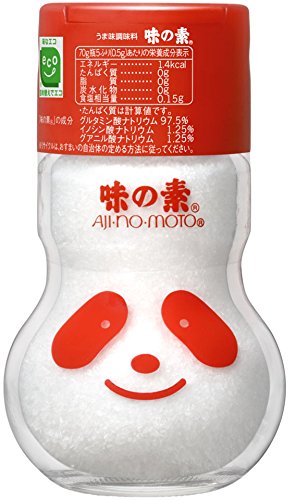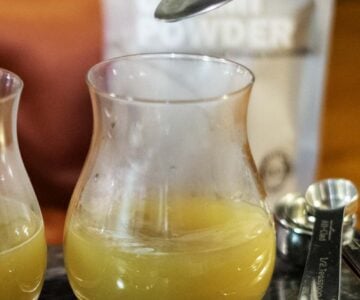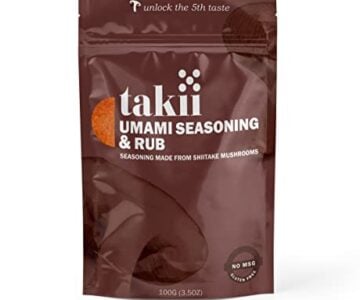MSG Seasoning

MSG seasoning is one of the easiest ways to add more umami flavor to your cooking. It is an all-natural ingredient made the same way yogurt, vinegar, and soy sauce are made.
MSG is pure umami seasoning in a bottle and something that every cook should have in their spice rack. Its distinctive flavor is an easy way to give your favorite dishes a more savory taste.
A fun way to use this seasoning is to gather some friends and take our umami taste test.
Amazon.com Price: $9.99 (as of 14/06/2024 22:55 PST- Details)
Unfairly maligned for years, MSG has been recognized as safe by the FDA and is regularly used by chefs, cooks, and food companies around the world as a food additive to improve the depth of flavor in the foods they make.
This seasoning is produced by Anjimoto, which is the company founded by Dr. Kikunae Ikeda, who discovered umami and developed the process for producing MSG.
If you’re interested in learning more about umami, which is the fifth basic taste, and how to incorporate the flavor into your cooking, read Everything You Need to Know About Umami.
We also have a primer on how to pick out ingredients and cook with umami foods.
How to Use MSG Seasoning as a Flavor Enhancer
It’s easy to use MSG seasoning to improve the flavor of your food. MSG can be sprinkled on top of dishes, similar to salt and pepper, or added to stocks and sauces to deepen their flavor.
It only takes a little bit to enhance a dish’s flavor profile. It can be paired with a little Umami Powder to create the taste sensation of an umami bomb.
Here are some of our favorite umami rich recipes.
What is MSG Seasoning
Monosodium Glutamate (MSG) is the sodium salt of the glutamic acid. Glutamic acid is one of the most common amino acids in nature, is naturally present in our bodies, is found in a wide range of ingredients, and is regularly added to many food additives.
It is produced using a fermentation process that uses starch from sugar beets, sugar cane, or molasses. The fermentation process used to make MSG is similar to that used to make yogurt and miso.
You can read more about the origin of MSG in Discovering Umami – A Brief History of the Fifth Flavor.
Frequently Asked Questions
What is MSG made of?
Monosodium Glutamate (MSG) is usually produced through a fermentation process using starch from sugar beets, sugar cane, or molasses.
Chemically MSG is nothing more than the sodium salt of the amino acid glutamic acid. As a substance, it is present in our bodies, occurs naturally in a wide range of ingredients, and is a flavorful seasoning regularly used as a food additive across a range of food products.
The fermentation process used to make MSG is similar to that used to make yogurt, vinegar, and wine.
How to use msg?
MSG can be used the same way as salt, pepper, or other herbs and spices by incorporating it in a dish as it cooks or by sprinkling it on top. One of the easiest ways to use it as a flavor enhancer is to add it to soups or stews to deepen their flavor. It’s also often added to spice mixes as a flavor enhancer or on its own as an all-purpose seasoning.
MSG is a common flavor enhancer in Asian cuisines and is becoming used more widely as people learn how to incorporate this umami seasoning into their favorite recipes and other cuisines.
How to store monosodium glutamate (MSG)?
MSG should be stored in a cool dry place, ideally in a bottle or bag similar to other herbs or spices found in the spice aisle.
Is MSG seasoning bad for you?
No. There is no scientific evidence that MSG causes an adverse reaction when ingested or that people have can have an allergic reaction when it’s added to food.
The FDA considers the addition of MSG to foods to be “generally recognized as safe” (GRAS). For more information, read the FDA’s Frequently Asked Questions on MSG.
| Brand | Ajinomoto |
|---|










